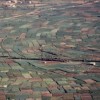 El cultivo en asocio (o cultivo intercalado) es una práctica en donde se siembran diversos cultivos en un mismo campo. Adicionalmente plantas que no son cultivos, tales como las malezas, cultivos rastreros o de cobertura, así como plantas del hábitat, se pueden combinar en el espacio y tiempo para influir en el número de plagas o artrópodos benéficos en un cultivo principal. This 7-page fact sheet was written by Hugh Smith y Oscar Liburd. Traducido por Ana Lucrecia MacVean, and published by the UF Department of Entomology and Nematology, June 2012.
El cultivo en asocio (o cultivo intercalado) es una práctica en donde se siembran diversos cultivos en un mismo campo. Adicionalmente plantas que no son cultivos, tales como las malezas, cultivos rastreros o de cobertura, así como plantas del hábitat, se pueden combinar en el espacio y tiempo para influir en el número de plagas o artrópodos benéficos en un cultivo principal. This 7-page fact sheet was written by Hugh Smith y Oscar Liburd. Traducido por Ana Lucrecia MacVean, and published by the UF Department of Entomology and Nematology, June 2012.
http://edis.ifas.ufl.edu/in932
Tag: Entomology and Nematology Department
El Virus del Nilo Occidental (ENY6425/IN185)
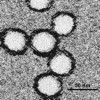 El virus del Nilo Occidental es acarreado por mosquitos y si es transmitido a humanos puede causar una encefalitis severa. Esta relacionado estrechamente con el virus de la encefalitis de St. Louis que a veces es un problema en Florida. El virus del Nilo Occidental fué documentado por primera vez en los Estados Unidos en la ciudad de New York durante una epidemia en 1999. This 4-page fact sheet was written by Jorge Rey, C. Roxanne Connelly, Jonathan F. Day, y Walter J. Tabachnick, and published by the UF Department of Entomology and Nematology, June 2012.
El virus del Nilo Occidental es acarreado por mosquitos y si es transmitido a humanos puede causar una encefalitis severa. Esta relacionado estrechamente con el virus de la encefalitis de St. Louis que a veces es un problema en Florida. El virus del Nilo Occidental fué documentado por primera vez en los Estados Unidos en la ciudad de New York durante una epidemia en 1999. This 4-page fact sheet was written by Jorge Rey, C. Roxanne Connelly, Jonathan F. Day, y Walter J. Tabachnick, and published by the UF Department of Entomology and Nematology, June 2012.
http://edis.ifas.ufl.edu/in185
Stable Fly (Dog Fly) Control (ENY267/IG133)
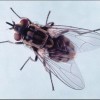 The stable fly is a blood-sucking filth fly of considerable importance to people, pets, livestock, and the tourist industry in Florida. Filth flies, including stable flies, exploit habitats and food sources created by human activities, such as farming. Stable flies primarily attack animals for a blood meal, but in the absence of an animal host, they will bite people. This 4-page fact sheet was written by P. E. Kaufman and E. N. I. Weeks, and published by the UF Department of Entomology and Nematology, August 2012.
The stable fly is a blood-sucking filth fly of considerable importance to people, pets, livestock, and the tourist industry in Florida. Filth flies, including stable flies, exploit habitats and food sources created by human activities, such as farming. Stable flies primarily attack animals for a blood meal, but in the absence of an animal host, they will bite people. This 4-page fact sheet was written by P. E. Kaufman and E. N. I. Weeks, and published by the UF Department of Entomology and Nematology, August 2012.
http://edis.ifas.ufl.edu/ig133
Citrus Mealybug Planococcus citri (Risso) (Insecta: Hemiptera: Pseudococcidae) (EENY537/IN947)
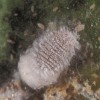 The citrus mealybug is a common pest of citrus primarily in greenhouses, and of several ornamental plants in Florida. It has been recognized as a difficult to control pest in Europe since 1813, where it is called the greenhouse mealybug and in the United States since 1879. This 4-page fact sheet was written by Harsimran Kaur Gill, Gaurav Goyal, and Jennifer Gillett-Kaufman, and published by the UF Department of Entomology and Nematology, September 2012.
The citrus mealybug is a common pest of citrus primarily in greenhouses, and of several ornamental plants in Florida. It has been recognized as a difficult to control pest in Europe since 1813, where it is called the greenhouse mealybug and in the United States since 1879. This 4-page fact sheet was written by Harsimran Kaur Gill, Gaurav Goyal, and Jennifer Gillett-Kaufman, and published by the UF Department of Entomology and Nematology, September 2012.
http://edis.ifas.ufl.edu/in947
Polyphemus Moth Antheraea polyphemus (Cramer) (Insecta: Lepidoptera: Saturniidae: Saturniinae) (EENY531/IN945)
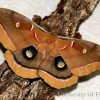 The polyphemus moth, Antheraea polyphemus (Cramer), is one of our largest and most beautiful silk moths. It is named after Polyphemus, the giant cyclops from Greek mythology who had a single large, round eye in the middle of his forehead. The name is because of the large eyespots in the middle of the moth’s hind wings. This 9-page fact sheet was written by Donald W. Hall, and published by the UF Department of Entomology and Nematology, August 2012.
The polyphemus moth, Antheraea polyphemus (Cramer), is one of our largest and most beautiful silk moths. It is named after Polyphemus, the giant cyclops from Greek mythology who had a single large, round eye in the middle of his forehead. The name is because of the large eyespots in the middle of the moth’s hind wings. This 9-page fact sheet was written by Donald W. Hall, and published by the UF Department of Entomology and Nematology, August 2012.
http://edis.ifas.ufl.edu/in945
Entomopathogenic Nematodes (Nematoda: Rhabditida: families Steinernematidae and Heterorhabditidae) (EENY530/IN944)
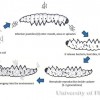 Entomopathogenic nematodes are soft bodied, non-segmented roundworms that are obligate or sometimes facultative parasites of insects. They occur naturally in soil environments and locate their host in response to carbon dioxide, vibration, and other chemical cues. They fit nicely into integrated pest management programs because they are nontoxic to humans, specific to their target pests, and can be applied with standard pesticide equipment. This 4-page fact sheet was written by Nastaran Tofangsazie, Steven P. Arthurs, and Robin M. Giblin-Davis, and published by the UF Department of Entomology and Nematology, August 2012.
Entomopathogenic nematodes are soft bodied, non-segmented roundworms that are obligate or sometimes facultative parasites of insects. They occur naturally in soil environments and locate their host in response to carbon dioxide, vibration, and other chemical cues. They fit nicely into integrated pest management programs because they are nontoxic to humans, specific to their target pests, and can be applied with standard pesticide equipment. This 4-page fact sheet was written by Nastaran Tofangsazie, Steven P. Arthurs, and Robin M. Giblin-Davis, and published by the UF Department of Entomology and Nematology, August 2012.
http://edis.ifas.ufl.edu/in944
Quick Sheet: Insecticides and Miticides Recommended for Use in the Florida Citrus Pest Management Guide (ENY854/IN807)
 This document is a two-page quick reference guide to citrus insecticides and miticides recommended in the Florida Citrus Pest Management Guide, their effects on important citrus pests, and their natural enemies. Written by M.E. Rogers, P.A. Stansly, L.L. Stelinski, and J.D. Yates, and published by the UF Department of Entomology and Nematology, January 2012.
This document is a two-page quick reference guide to citrus insecticides and miticides recommended in the Florida Citrus Pest Management Guide, their effects on important citrus pests, and their natural enemies. Written by M.E. Rogers, P.A. Stansly, L.L. Stelinski, and J.D. Yates, and published by the UF Department of Entomology and Nematology, January 2012.
http://edis.ifas.ufl.edu/in807
Tropical Bont Tick Amblyomma variegatum Fabricius (Arachnida: Acari: Ixodidae) (EENY518/IN934)
 The tropical bont tick is considered one of the most detrimental of the tick species present in Africa and now the Caribbean. It can result in severe economic losses due to hide damage, milk production reduction, and death of livestock. This 7-page fact sheet was written by Karen C. Prine and Amanda C. Hodges, and published by the UF Department of Entomology and Nematology, June 2012.
The tropical bont tick is considered one of the most detrimental of the tick species present in Africa and now the Caribbean. It can result in severe economic losses due to hide damage, milk production reduction, and death of livestock. This 7-page fact sheet was written by Karen C. Prine and Amanda C. Hodges, and published by the UF Department of Entomology and Nematology, June 2012.
http://edis.ifas.ufl.edu/in934
Cottonwood Leaf Beetle Chrysomela scripta Fabricius (Insecta: Coleoptera: Chrysomelidae: Chrysomela) (EENY519/IN936)
 The cottonwood leaf beetle is one of the most economically-important pests of managed cottonwood, aspen, and some poplar and willow species. Often it is a severe pest of urban ornamental trees. This leaf feeder has several generations each year, may cause extensive leaf loss, and can consequently reduce stem volume up to 70%. This 6-page fact sheet was written by Amelio A. Chi and Russell F. Mizell III, and published by the UF Department of Entomology and Nematology, June 2012.
The cottonwood leaf beetle is one of the most economically-important pests of managed cottonwood, aspen, and some poplar and willow species. Often it is a severe pest of urban ornamental trees. This leaf feeder has several generations each year, may cause extensive leaf loss, and can consequently reduce stem volume up to 70%. This 6-page fact sheet was written by Amelio A. Chi and Russell F. Mizell III, and published by the UF Department of Entomology and Nematology, June 2012.
http://edis.ifas.ufl.edu/in936
Embalses Costeros Para el Control de los Mosquitos (ENY648S/IN193)
 Los embalses costeros utilizados en Florida para el control de los mosquitos son marismas o manglares con un dique periférico que permite inundar el área durante la temporada de cría de mosquitos. Desde entonces, investigaciones científicas han demostrado que el embalsamiento puede causar serios impactos ambientales en las marismas, manglares y esteros colindantes. Hoy en día, se ha devuelto una hidrología más natural a más de 1,300 ha de marismas y manglares embalsados y se han eliminado más de 70 km de diques. De las 16,185 ha originales de marismas embalsadas en la laguna Indian River, se han restaurado de alguna manera más de 12,600 ha, ya sea por reconexión, brechas en los diques, o restauración de las orillas. This 6-page fact sheet was written by Jorge R. Rey y C. Roxanne Connelly, and published by the UF Department of Entomology and Nematology, June 2012.
Los embalses costeros utilizados en Florida para el control de los mosquitos son marismas o manglares con un dique periférico que permite inundar el área durante la temporada de cría de mosquitos. Desde entonces, investigaciones científicas han demostrado que el embalsamiento puede causar serios impactos ambientales en las marismas, manglares y esteros colindantes. Hoy en día, se ha devuelto una hidrología más natural a más de 1,300 ha de marismas y manglares embalsados y se han eliminado más de 70 km de diques. De las 16,185 ha originales de marismas embalsadas en la laguna Indian River, se han restaurado de alguna manera más de 12,600 ha, ya sea por reconexión, brechas en los diques, o restauración de las orillas. This 6-page fact sheet was written by Jorge R. Rey y C. Roxanne Connelly, and published by the UF Department of Entomology and Nematology, June 2012.
http://edis.ifas.ufl.edu/in193
Mosquito Control Impoundments (ENY648S/IN192)
 A mosquito control impoundment is a salt marsh or mangrove forest with an earthen dike around the perimeter that allows the area to be artificially flooded during the mosquito breeding season. Since the seventies, research has shown that impounding can have severe environmental impacts on the marshes and the adjoining estuary. So, over 12,600 hectares of the original 16,185 of impoundments have been rehabilitated in some fashion. This 6-page fact sheet was written by Jorge R. Rey and C. Roxanne Connelly, and published by the UF Department of Entomology and Nematology, June 2012.
A mosquito control impoundment is a salt marsh or mangrove forest with an earthen dike around the perimeter that allows the area to be artificially flooded during the mosquito breeding season. Since the seventies, research has shown that impounding can have severe environmental impacts on the marshes and the adjoining estuary. So, over 12,600 hectares of the original 16,185 of impoundments have been rehabilitated in some fashion. This 6-page fact sheet was written by Jorge R. Rey and C. Roxanne Connelly, and published by the UF Department of Entomology and Nematology, June 2012.
http://edis.ifas.ufl.edu/in192
Ehrlichia y Anaplasma en Florida (ENY662S/IN422)
 Ehrlichia y Anaplasma son géneros bacterianos emparentados que causan enfermedades en humanos y en animales domésticos. A las enfermedades se les llama generalmente erliquiosis (ehrlichiosis) o anaplasmosis, pero existen varias especies de bacteria que causan diferentes síntomas y pueden tener diferentes vectores. This 4-page fact sheet was written by Jorge R. Rey, Cynthia C. Lord, y Roxanne Rutledge Connelly, and published by the UF Department of Entomology and Nematology, July 2012.
Ehrlichia y Anaplasma son géneros bacterianos emparentados que causan enfermedades en humanos y en animales domésticos. A las enfermedades se les llama generalmente erliquiosis (ehrlichiosis) o anaplasmosis, pero existen varias especies de bacteria que causan diferentes síntomas y pueden tener diferentes vectores. This 4-page fact sheet was written by Jorge R. Rey, Cynthia C. Lord, y Roxanne Rutledge Connelly, and published by the UF Department of Entomology and Nematology, July 2012.
http://edis.ifas.ufl.edu/in422
A Stink Bug Euschistus quadrator Rolston (Insecta: Hemiptera: Pentatomidae) (EENY523/IN937)
 Euschistus quadrator, like other stink bugs, is highly polyphagous. It is found on weeds such as clover, vetch and other legumes. It feeds on many different crops, though it is primarily found on cotton, soybeans and corn. Stink bugs cause injury to various fruits and vegetables by feeding, resulting in significant quality and yield loss. They have piercing-sucking mouthparts and most feed primarily on fruits and seeds. This 5-page fact sheet was written by Sara A. Brennan, Joseph Eger, and Oscar E. Liburd, and published by the UF Department of Entomology and Nematology, June 2012.
Euschistus quadrator, like other stink bugs, is highly polyphagous. It is found on weeds such as clover, vetch and other legumes. It feeds on many different crops, though it is primarily found on cotton, soybeans and corn. Stink bugs cause injury to various fruits and vegetables by feeding, resulting in significant quality and yield loss. They have piercing-sucking mouthparts and most feed primarily on fruits and seeds. This 5-page fact sheet was written by Sara A. Brennan, Joseph Eger, and Oscar E. Liburd, and published by the UF Department of Entomology and Nematology, June 2012.
http://edis.ifas.ufl.edu/in937
Wasp Parasitoid Doryctobracon areolatus (Szépligeti) (Insecta: Hymenoptera: Braconidae) (EENY525/IN938)
 Doryctobracon areolatus was introduced into Florida and the Dominican Republic for control of the Caribbean fruit fly and the West Indian fruit fly. In its native habitats, parasitism of fruit flies in certain fruit can reach more than 80%. Mean parasitism of Caribbean fruit fly following original establishment in Florida was around 40%. This 4-page fact sheet was written by Charles Stuhl and John Sivinski, and published by the UF Department of Entomology and Nematology, June 2012.
Doryctobracon areolatus was introduced into Florida and the Dominican Republic for control of the Caribbean fruit fly and the West Indian fruit fly. In its native habitats, parasitism of fruit flies in certain fruit can reach more than 80%. Mean parasitism of Caribbean fruit fly following original establishment in Florida was around 40%. This 4-page fact sheet was written by Charles Stuhl and John Sivinski, and published by the UF Department of Entomology and Nematology, June 2012.
http://edis.ifas.ufl.edu/in938
Western Leaffooted Bug Leptoglossus zonatus (Dallas) (Insecta: Hemiptera: Coreidae) (EENY517/IN935)
 Leptoglossus zonatus feeds on the satsuma mandarin by inserting its piercing-sucking mouthparts in the fruit and releasing a toxic substance. It transmits a trypanosomatid plant pathogen similar to the one that causes Chagas’ disease and sleeping sickness in humans, but that is only pathogenic to plants. This 4-page fact sheet was written by Amelio A. Chi and Russell F. Mizell III, and published by the UF Department of Entomology and Nematology, June 2012.
Leptoglossus zonatus feeds on the satsuma mandarin by inserting its piercing-sucking mouthparts in the fruit and releasing a toxic substance. It transmits a trypanosomatid plant pathogen similar to the one that causes Chagas’ disease and sleeping sickness in humans, but that is only pathogenic to plants. This 4-page fact sheet was written by Amelio A. Chi and Russell F. Mizell III, and published by the UF Department of Entomology and Nematology, June 2012.
http://edis.ifas.ufl.edu/in935
Tawny Emperor butterfly Asterocampa clyton (Boisduval & LeConte) (Insecta: Lepidoptera: Nymphalidae: Apaturinae) (EENY528/IN933)
 The tawny emperor is a medium sized, non-descript butterfly that is common in riparian forests, but is also found in dry woods and suburbs. Larvae that develop in fall overwinter in small groups in a hibernaculum constructed by tying leaves together with silk so it stays on the tree throughout the winter. This 8-page fact sheet was written by Donald W. Hall, and published by the UF Department of Entomology and Nematology, June 2012.
The tawny emperor is a medium sized, non-descript butterfly that is common in riparian forests, but is also found in dry woods and suburbs. Larvae that develop in fall overwinter in small groups in a hibernaculum constructed by tying leaves together with silk so it stays on the tree throughout the winter. This 8-page fact sheet was written by Donald W. Hall, and published by the UF Department of Entomology and Nematology, June 2012.
http://edis.ifas.ufl.edu/in933
Bean Plataspid: Megacopta cribraria (Fabricius) (Insecta: Hemiptera: Heteroptera: Plataspidae) (EENY527/IN939)
 Also known as the kudzu bug, lablab bug, and globular stink bug, the bean plantaspid is native to Asia, where it is not an agricultural pest. But in the U. S., it is reported as a pest of soybean in Georgia and South Carolina. Adults from established populations overwinter on light colored structures, in leaf litter, and underneath the bark of trees. Also, like stink bugs, adults tend to excrete an odor as a defense mechanism when disturbed. The defense chemical these insects secrete may stain the surface of the house, building or vehicle where aggregation occurs. This 6-page fact sheet was written by Ashley Poplin and Amanda Hodges, and published by the UF Department of Entomology and Nematology, June 2012.
Also known as the kudzu bug, lablab bug, and globular stink bug, the bean plantaspid is native to Asia, where it is not an agricultural pest. But in the U. S., it is reported as a pest of soybean in Georgia and South Carolina. Adults from established populations overwinter on light colored structures, in leaf litter, and underneath the bark of trees. Also, like stink bugs, adults tend to excrete an odor as a defense mechanism when disturbed. The defense chemical these insects secrete may stain the surface of the house, building or vehicle where aggregation occurs. This 6-page fact sheet was written by Ashley Poplin and Amanda Hodges, and published by the UF Department of Entomology and Nematology, June 2012.
http://edis.ifas.ufl.edu/in939
Lesser Cornstalk Borer Damage to Sugarcane and the Effects of Tillage and Harvest Residue Management (ENY454/SC094)
 This 6-page fact sheet provides an overview of this pest, its damage to sugarcane, and the plant’s response, and describes the results of a study of harvest residue and controlled tillage experiments. Written by Hardev S. Sandhu, Leslie E. Baucum, and Gregg S. Nuessly, and published by the UF Department of Entomology and Nematology, May 2012.
This 6-page fact sheet provides an overview of this pest, its damage to sugarcane, and the plant’s response, and describes the results of a study of harvest residue and controlled tillage experiments. Written by Hardev S. Sandhu, Leslie E. Baucum, and Gregg S. Nuessly, and published by the UF Department of Entomology and Nematology, May 2012.
http://edis.ifas.ufl.edu/sc094
Common Weed Hosts of Insect-Transmitted Viruses of Florida Vegetable Crops (ENY863/IN931)
 This 12-page fact sheet expands upon and updates the information on several weeds reported as virus hosts by UF/IFAS plant pathologists in 2001 and provides links to further information on specific viruses that affect vegetable crops. Written by Gaurav Goyal, Harsimran K. Gill, and Robert McSorley, and published by the UF Department of Entomology and Nematology, April 2012.
This 12-page fact sheet expands upon and updates the information on several weeds reported as virus hosts by UF/IFAS plant pathologists in 2001 and provides links to further information on specific viruses that affect vegetable crops. Written by Gaurav Goyal, Harsimran K. Gill, and Robert McSorley, and published by the UF Department of Entomology and Nematology, April 2012.
http://edis.ifas.ufl.edu/in931
A Mosquito Culex (Melanoconion) pilosus (Dyar and Knab) (Insecta: Diptera: Culicidae) (EENY521/IN930)
 This small, dark mosquito tends to feed on reptiles and amphibians. It is found in the southeastern United States and many countries in Central America and South America. This 3-page fact sheet was written by Diana Vork and C. Roxanne Connelly, and published by the UF Department of Entomology and Nematology, April 2012.
This small, dark mosquito tends to feed on reptiles and amphibians. It is found in the southeastern United States and many countries in Central America and South America. This 3-page fact sheet was written by Diana Vork and C. Roxanne Connelly, and published by the UF Department of Entomology and Nematology, April 2012.
http://edis.ifas.ufl.edu/in930